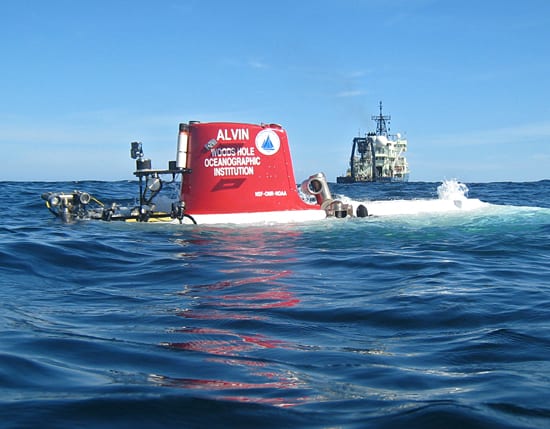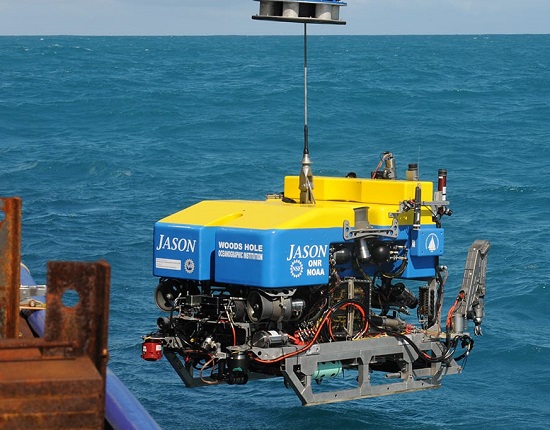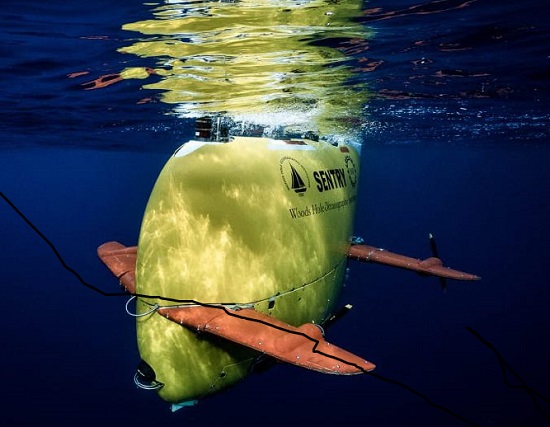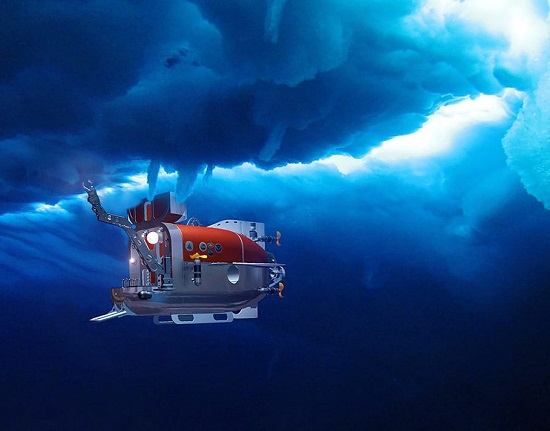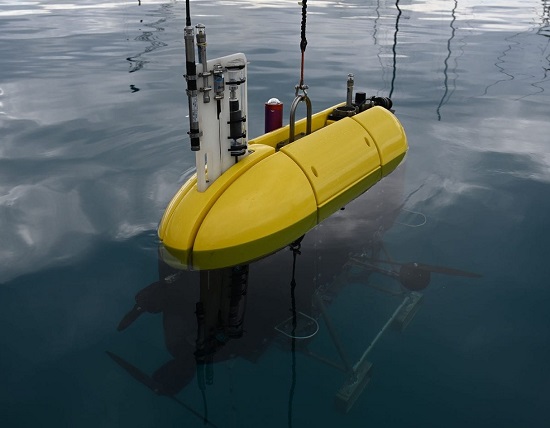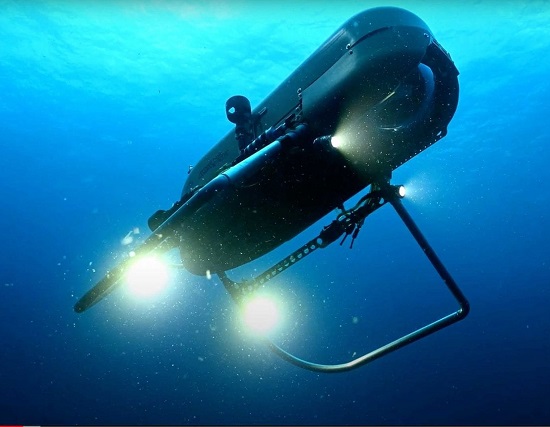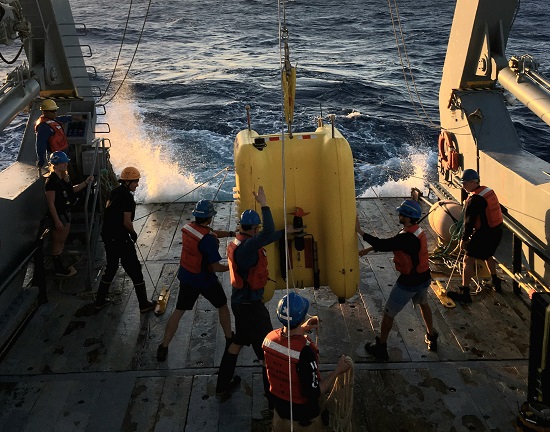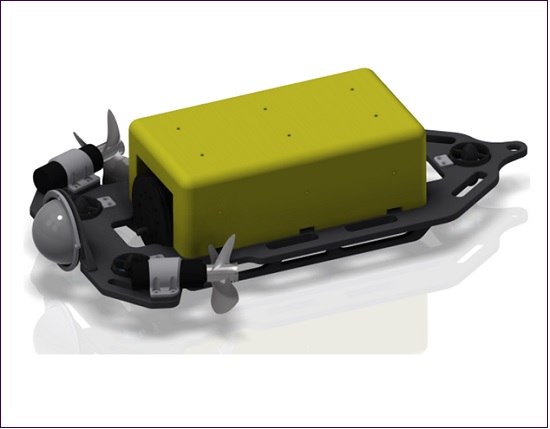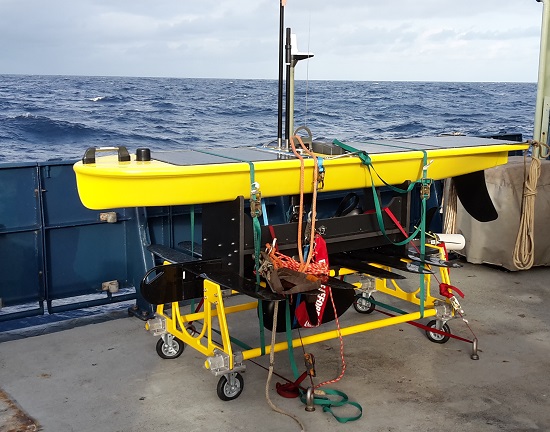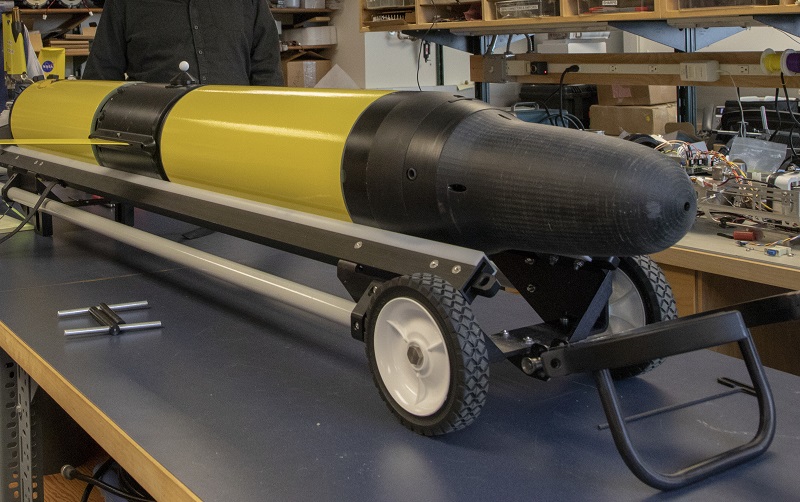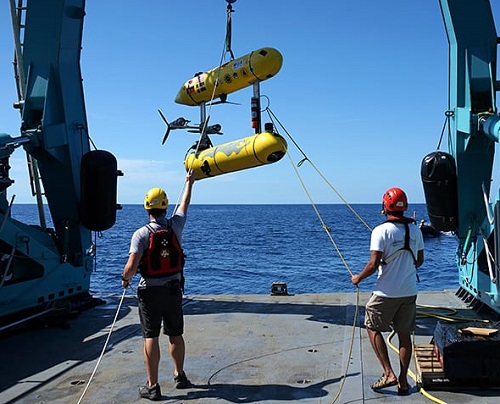Vehicles
Human Occupied Vehicle (HOV) Alvin
The Human Occupied Vehicle (HOV) Alvin enables in-situ data collection and observation to depths reaching 6,500 meters during dives of up to ten hours. With Alvin's new depth rating, about 99 percent of the seafloor is now within reach.
Remotely Operated Vehicle (ROV) Jason/Medea
Jason/Medea is a remotely operated vehicle (ROV) system designed and built by WHOI’s Deep Submergence Laboratory and funded by the National Science Foundation to allow access to the seafloor without leaving the deck of a ship.
Autonomous Underwater Vehicle (AUV) Sentry
Sentry is a fully autonomous underwater vehicle capable of exploring the ocean to depths of 6,000 meters. Sentry builds on the success of previous AUVs with improved speed, range, and maneuverability with a hydrodynamic shape to allow faster ascents and descents.
Hybrid Remotely Operated Vehicle (HROV) Nereid Under Ice
Nereid Under Ice explores under-ice environments while traveling up to 40 kilometers (25 miles) laterally underwater. This hybrid remotely operated vehicle carries a full suite of acoustic, chemical, and biological sensors and is rated to dive as far as 5,000 meters beneath the surface to sample or survey mid-water or seafloor areas.
Mesobot
The hybrid robot Mesobot was designed to study life in the ocean twilight zone. It can maneuver under its own power for more than 24 hours, using its cameras and lights to slowly follow individual animals while making a variety of other measurements and taking samples. As a hybrid robot, Mesobot can be controlled either by human pilots through a lightweight tether or autonomously.
Orpheus
Orpheus is a class of autonomous underwater vehicle (AUV) capable of reaching the ocean’s greatest depths. Two identical Orpheus AUVs, Orpheus and Eurydice, were named after the famous pair from Greek mythology who adventured through the depths of Hades. These AUVs allow access to depths below 6,000 meters, which has been historically limited due to the immense pressures of extreme depths.
Autonomous Underwater Vehicle (AUV) Clio
Clio is unique for its ability to sample dissolved and particulate seawater biochemistry while capturing fine-scale biogeochemical processes. Clio moves vertically through the ocean and drifts laterally to observe water masses while mapping large horizontal scales to a depth of 6,000 meters.
AuxROV
AuxROV is a comparatively small, low cost Remotely Operated Vehicle (ROV) for preliminary exploration, auxiliary support, and equipment recovery in harsh environments.
Wave Gliders
Wave Gliders act as communications relays to monitor and redirect Sentry while remote from the vehicle. These autonomous surface vehicles can then provide deep-water supervision by allowing Sentry to operate independently.
Polar Sentinel Autonomous Underwater Glider
The newly developed Polar Sentinel can travel thousands of miles below the surface of the Arctic Ocean to measure ice thickness with the power draw of a cell phone. Inside the vehicle’s nose is a sonar system that provides an x-ray-like profile of the ice as it cruises several meters below the frozen surface. A Doppler sonar module also provides navigational guidance based on the terrain of the seafloor.
Seabed AUVs/Puma/Jaguar
SeaBED-class vehicles are capable of working from small coastal vessels on missions ranging from shallow coral reef surveys to searches for deep sea hydrothermal vents. Puma and Jaguar, which are rated to 5000 meters, are additions to the Seabed AUV fleet.
